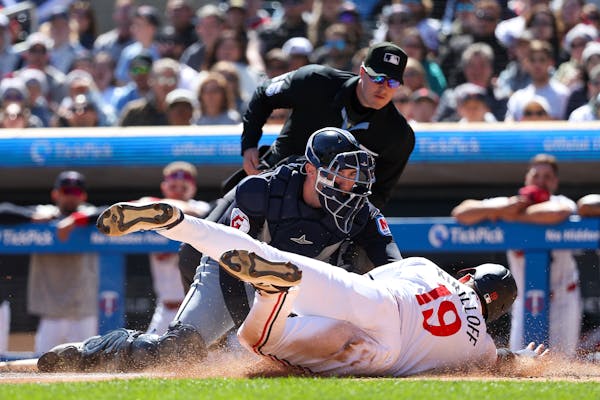There have been three generations of shortstops for the Twins, based on the home field on which they have played.
There were the warriors that played on the infield at Met Stadium, where noble efforts were made by Dick Ericson's grounds crew to make the best of difficult soil and divots left by football and soccer players.
"When Graig Nettles was playing third base with the Yankees, he wouldn't take infield at the Met," Roy Smalley said. "I asked him what the deal was at the batting cage one day and he said, 'How do you play on this?' "
Smalley was the Twins shortstop at Met Stadium from the middle of the 1976 season through 1981.
Owner Calvin Griffith waited patiently to test the fan appeal of the new Metrodome in 1982, then started his salary dump by trading Smalley to the Yankees on April 10 — four games into the season.
Greg Gagne came in that trade and would have the most longevity of the lengthy artificial turf era for shortstopping in the Dome (1982-2009).
The third era started here at Target Field, on a field of fine Colorado grass with underground pipes to pump water. Presumably, if the previous natural surface that served as a Twins' home field had such a system, Smalley and others wouldn't have been playing with a lagoon behind them in left field at Met Stadium.
Three excellent shortstops made the best of things in Bloomington: Zoilo Versalles, with 1,053 starts from the Twins' beginning in 1961 through 1967; Leo Cardenas, 471 starts, 1969-71; and Smalley, with 789 starts in those 5½ seasons.
Versalles had outstanding range and some throws that made him dangerous to people in box seats behind first base. Cardenas and Smalley were limited in range and less erratic.
Gagne was a tremendous defender for 1,051 regular-season starts and two World Series-winning runs for the Twins in the Metrodome. Fast, tremendous athlete, good enough arm … a shortstop made to play on turf.
The Twins let him leave as a free agent after 1992 and didn't find a replacement until Cristian Guzman gave them a run of reasonably solid play early in the 2000s.
Veteran J.J. Hardy started the Target Field era in 2010 and had an OK season. Then, Bill Smith doomed his tenure as general manager by signing off on the addition of Tsuyoshi Nishioka, an alleged standout from Japan baseball.
Shortstop wasn't his position. In fact, he didn't have one. The ineptitude that lasted from 2011 to 2016 (excluding 2015) has been referred to here as the Nishioka Era, even though he was long gone.
Jorge Polanco was the starting shortstop for the American League in the 2019 All-Star Game, much more for his hitting than fielding. It was not until Carlos Correa landed in the Twins' laps — twice — that the Twins have been able to reclaim excellence at the most important position in any infield.
Correa is the highest-paid player in Twins history, and the hitting has only come in spurts, but here is today's hot take, Stephen A. Smith-style (if he were to watch baseball):
Carlos Correa Oppenheimer Jr., age 29, starting Season 3 in Minnesota (and if he remains healthy) will be the Twins' best-ever shortstop.
That would put him ahead of Gagne, who I have placed on my all-time Twins team, even though Zoilo did win that MVP Award in the pennant-winning 1965 season.
Smalley was contacted for his view of Correa at shortstop, a position Roy was raised to play by two big-leaguers — father Roy Sr. and uncle Gene Mauch.
"There are three things that separate a great shortstop from the really good," Smalley said. "Does he make all the routine plays? And Carlos does that with the best. Can he make all kinds of hops look routine? And he does.
"Finally, there's the ability to make the sensational play, and he will make those. As a shortstop, Carlos is the complete package."
There's also the great arm triggering a quick release, and then this unique quality:
"I think about that one-hop throw he makes from the deep hole … we all did that, on turf. He's doing it on grass. He saw the possibility, worked on it, and has made that part of his game.
"Also, the one-handed pickup with his glove on slow-hit balls. You don't see that. He has done it and it makes the transition faster.
"You know what Carlos is as a shortstop? He's fearless."

Reusse: Bill Nelson and Dundas are big parts of Minnesota 'townball' history
Reusse: Two decades after historic Minnesota summer, Ryan Moore returns for 3M Open

Patrick Reusse looks back at Hall of Fame weekend in Cooperstown

Reusse: Rod Carew still visits Cooperstown to show respect to baseball's legends



